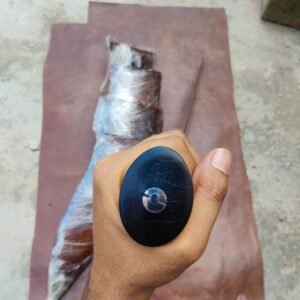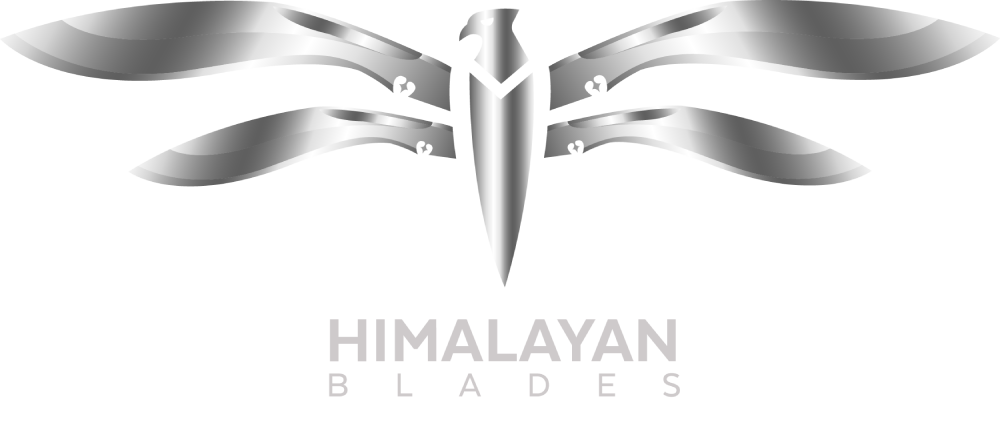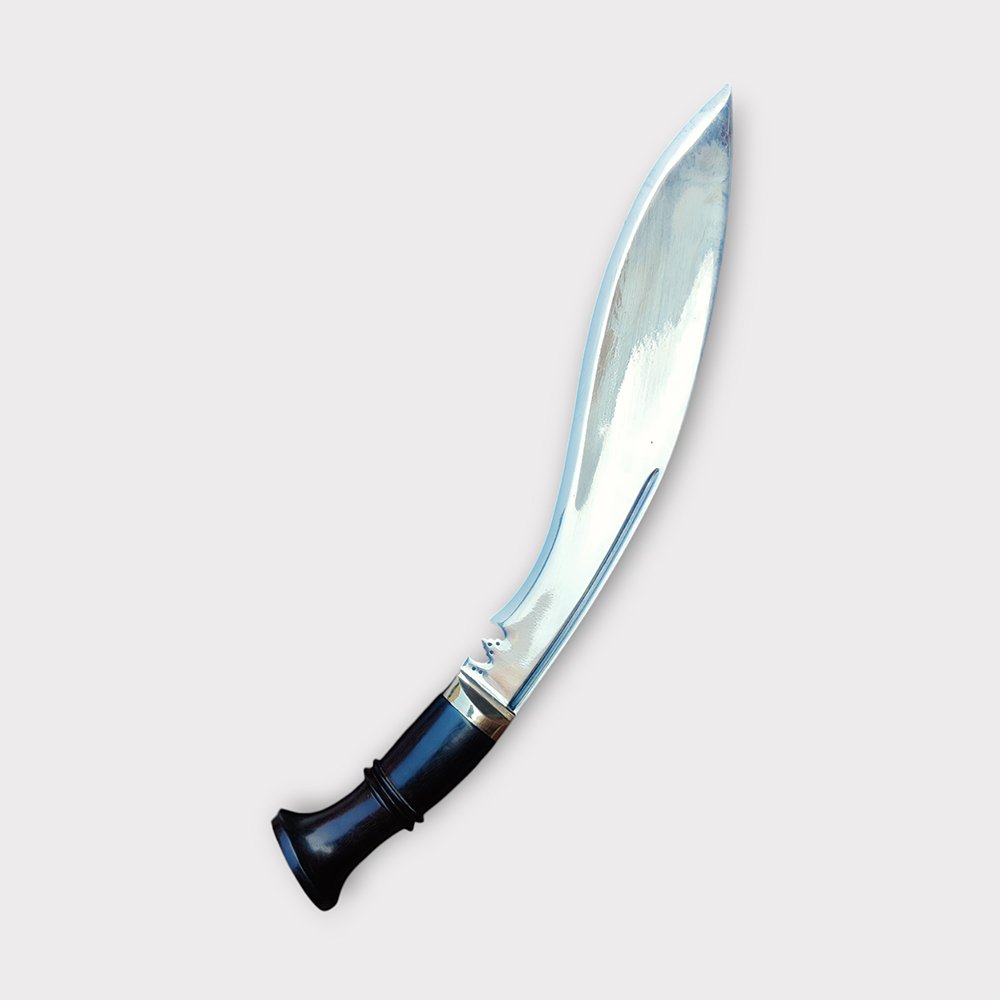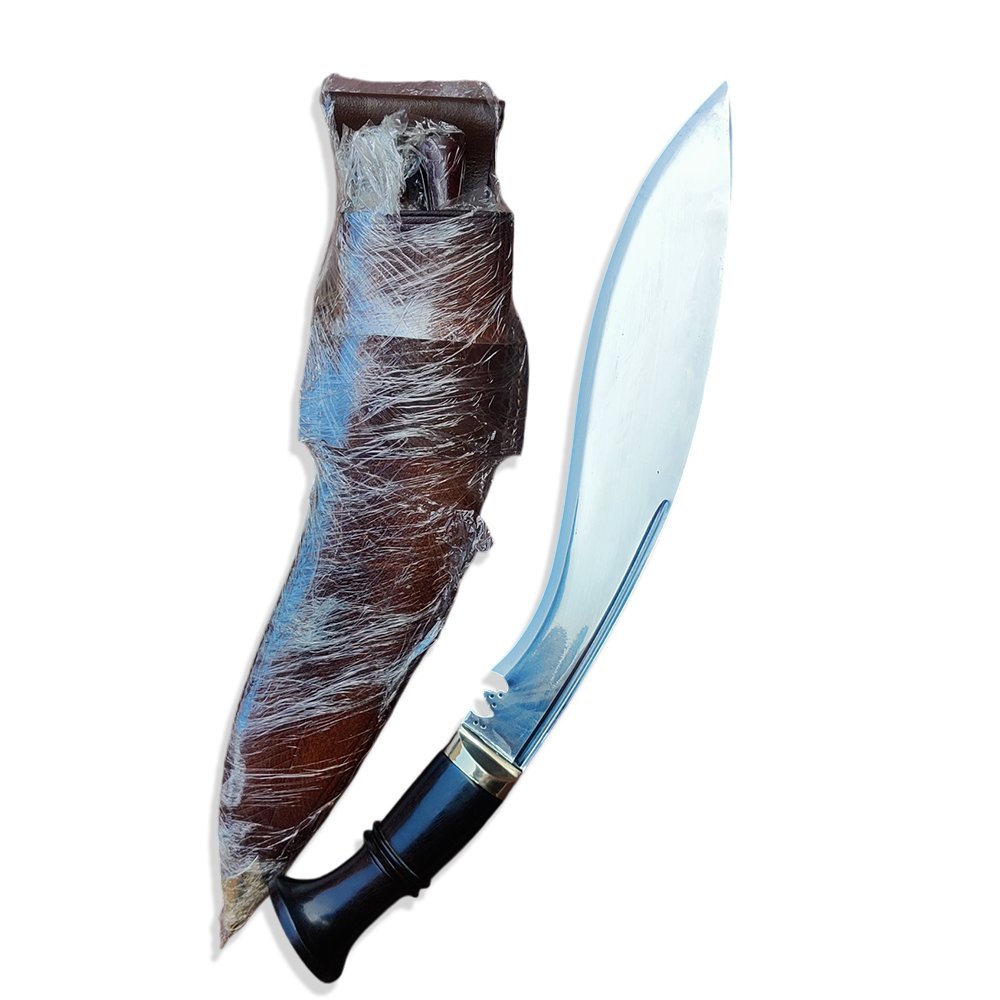The Standardization of Kukris – MK1 Kukri /Mark 1 Khukri
The MK1 Khukuri stands as a powerful and iconic blade. I’ve studied this design for years, and its historical significance amazes me. Moreover, its superior performance in both combat and utility tasks sets it apart from other kukris.
The British first issued this knife between 1903 and 1917. During this period, Gurkha regiments and other military units used it widely. Furthermore, it served in World War I and conflicts before it. The design team created it as a dependable tool. Consequently, it played a critical role in battles at Gallipoli and the Somme. Today, collectors and those seeking reliable, heavy-duty blades prize it highly. Most importantly, it was the first standardized kukri that the British issued to the Gurkhas.
Design & Features

The MK1 Khukuri stands out with its broad spine and distinctive belly. This design delivers incredible chopping power. While it may not be the fastest blade due to its weight, it compensates with sheer force. Additionally, the MK1 features a distinctive temple-shaped “cho.” This sunken nut at the butt holds the rat tail or stick tang. Therefore, it gives the blade a refined appearance.
The blade uses hollow forging and a distal taper. These features ensure excellent balance for both combat and outdoor work. In my experience testing various kukris, this balance makes all the difference in performance.
Handle Construction Of MK1 Kukri

The iconic handle design features a sturdy threaded rat-tail tang. A recessed nut tightens it, similar to early rifles. This construction method fascinated me when I first examined original pieces from military collections.
The handle is larger, smoother, and thicker than many other khukuris. This makes it comfortable to hold during extended use. Through hands-on testing, I’ve found this comfort factor crucial for serious work.
The design lacks a butt cap and extra flared portion at the end. Many 19th-century khukuris had these features to prevent slipping. However, their absence enhances the forward balance due to the broad belly. Therefore, it becomes perfect for powerful, deliberate strikes.
Utility and Performance

The MK1 excels as a high-performing chopping blade. Its thick spine and steep grind make it ideal for heavy-duty tasks. Whether you’re clearing brush or cutting deep into wood, it performs exceptionally. I’ve personally tested this blade against various materials, and its effectiveness consistently impresses me.
In martial applications, the MK1’s weight and design deliver devastating cuts. This is especially true in the hands of a skilled practitioner. The blade teaches you to work with momentum rather than against it. Additionally, you can watch the chopping performance by clicking here.
Historical Significance

The MK1 Khukuri represents more than just a tool—it embodies a piece of history. The Mark 1 Kukri Fort William was the first British standardized model. It started the series of uniform and standardized khukuri adoption throughout Gorkha regiments. Furthermore, it became the parent for upcoming models like MK2, MK3, and others.
Gurkhas used the MK1 khukuri during World War I and other conflicts. This use cemented its reputation as a symbol of strength and endurance. Notably, soldiers carried it at the Battle of Aubers in 1915. Through my research in military archives, I’ve documented numerous accounts of its battlefield effectiveness.
Why Choose the MK1 Kukri from Himalayan Blades
Whether you’re a collector or someone who values heavy-duty, field-proven blades, the MK1 Khukuri offers exceptional value. Himalayan Blades provides an unmatched blend of history, craftsmanship, and functionality. Its proven track record in both combat and outdoor use makes it essential for any serious enthusiast.
After years of studying and testing various kukris, I can confidently say the MK1 represents the pinnacle of traditional blade design. It combines historical authenticity with practical performance that modern users still appreciate today.
Watch the MK1 Khukuri video here – https://youtu.be/A6AQS3EMEYM?si=UTmJl9Jx7QM1czLx
Disclaimer: At Himalayan Blades, we provide accurate and informative content about kukris, Gurkha history, and blade-making art. We recognize there’s always room for learning and growth. Therefore, we welcome your insights and feedback. If you notice any mistakes or have improvement suggestions, please reach out to us. Your contributions help us create a better and more inclusive community. Thank you for joining our journey.
























Reviews
There are no reviews yet.